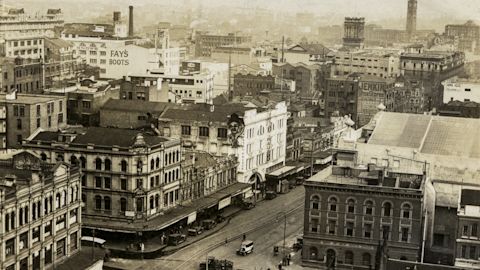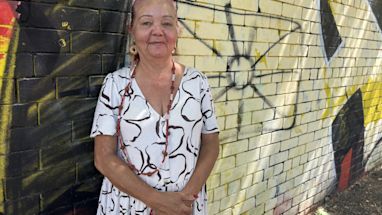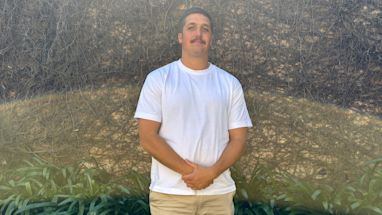It was a path well worn by the local Gadigal people who walked the track to Sydney’s bountiful Sydney Harbour to fish, meet and gather food.
Today we know this historic thoroughfare as George Street.
As the City of Sydney works on an ambitious $43.5 million project to create 9,000 square metres of car-free space on George Street south, we take a step back in time and look at how this vibrant street has evolved.
Many of Sydney’s first streets followed paths long used by local Aboriginal peoples, others were cut through the bush by chain gangs or followed goat and bullock tracks.
George Street was first a bush track, becoming a large dirt road in the 1800s before woodblock paving was used to line the road and in the 1930s, the road was laid with asphalt.

Unlike other Australian cities, Sydney's streets have been modified, altered, added and renamed on an ad hoc basis, with many thoroughfares disappearing or realigned over time.
It was customary in England to call a town's principal shopping strip High Street, and George Street was originally known along part of its length as High Street.
The section between about Hunter and King streets was called Spring Row, parts of the street were occasionally referred to as Sergeant Major's Row and Spring Street referred to as the Tank Stream.
In 1810, Governor Macquarie renamed the high street George Street in honour of King George III.

Until the 1830s the intersection of Bathurst and George streets was the edge of Sydney town, with the temporary Cathedral and old burial ground on the perimeter.
The steep decline down to Haymarket was known as Brickfield Hill. As its name suggests, the area was used in the early colony for brick making. Brickfield Hill was a distinct locality until the 1970s, marked by the imposing Anthony Horderns & Sons department store.

The building of the railway terminus in Cleveland Paddocks in 1855 and Sydney Town Hall from 1869 to 1879 saw the development of the southern end of George Street as a commercial strip.
Produce markets in Haymarket attracted entertainment and cheap housing, reinforcing southern George Street as a bustling, lower class area with quick access to Darling Harbour.

Draper Anthony Hordern & Co opened the doors to its Palace Emporium on Brickfield Hill in 1879. Following a fire in 1901, an even grander store was built and the universal provedore dominated George Street until the 1970s.

Today this is the site of World Square, where the new pedestrian boulevard is now open.
The new pedestrianised boulevard is now being lined with bluestone paving to create a seamless footpath for walking, dining and seating, and align with the light rail tracks running the full length of George street from Haymarket to Circular Quay.
Extending the George Street pedestrian boulevard will create wider footpaths for people walking and new spaces for businesses to operate.
The new pedestrian zone on George Street between Bathurst and Goulburn streets is part of the ambitious $43.5 million project that will create 9,000 square metres of car-free space to allow for physical distancing and more outdoor dining.

Published 26 September 2021, updated 21 October 2021



